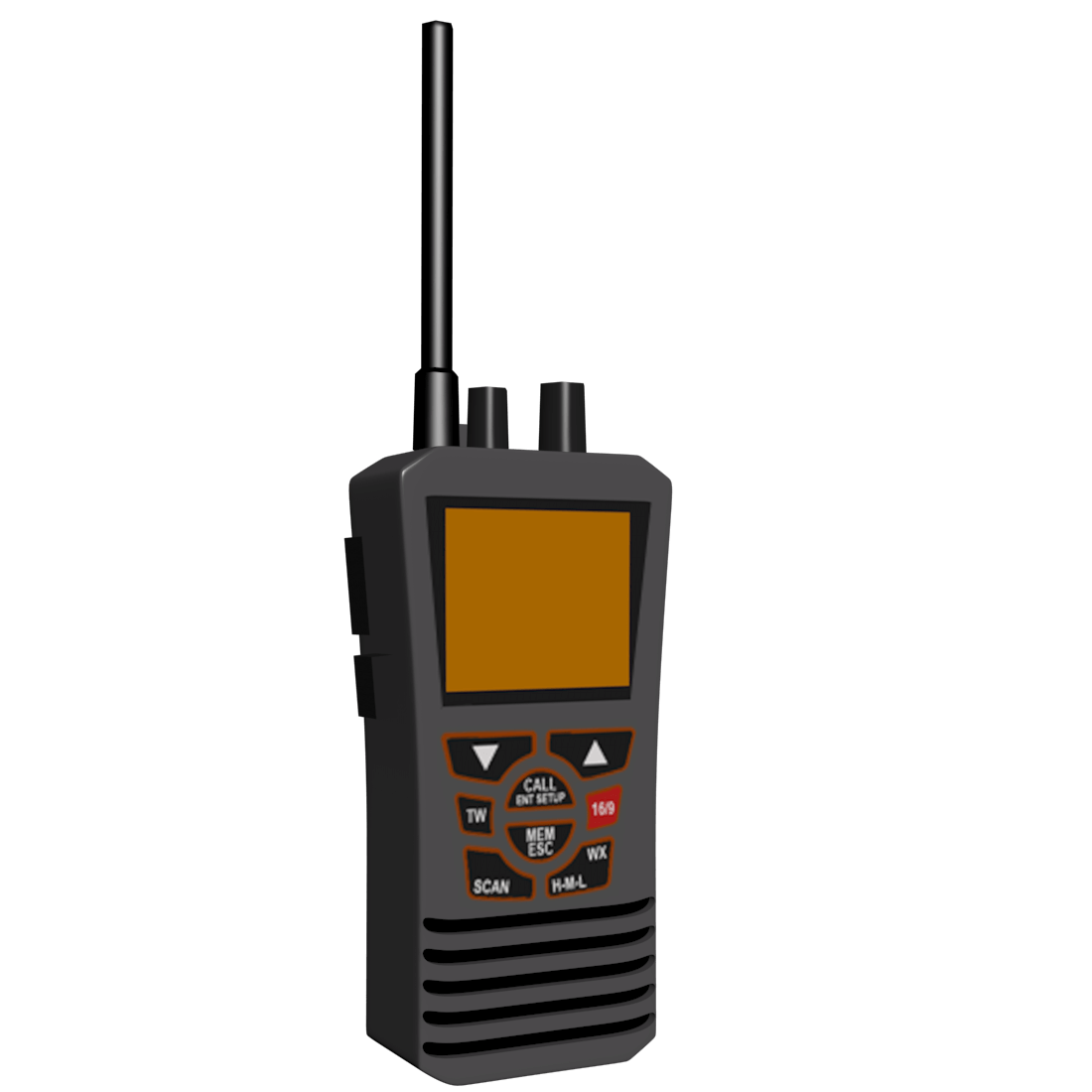VHF (Very High Frequency)
Which VHF radio channel is used for making distress calls?
If you have a VHF radio, keep it tuned to channel 16 for a distress call. Be aware of where you are at all times, and be prepared to describe your specific position.

Mayday - Mayday - Mayday
When in extreme danger (for example, your boat is taking on water and you are in danger of sinking or capsizing), use your VHF radio channel 16 and say “Mayday” — “Mayday” — “Mayday.” Then give the name of your boat, its position, the number of people on board, the nature of your problem and the type of help you need.

PanPan - PanPan - PanPan
If you need help but are not in immediate danger (for example, your motor has quit and you cannot reach shore), use channel 16 and say “Pan Pan” — “Pan Pan” — “Pan Pan.” Then give the name of your boat, its position, the number of people on board, the nature of your problem and the type of help you need.
Who needs a restricted operators certificate to use a VHF radio?
ROC (Restricted Radiotelephone Operator's Certificate) is required by anyone using a marine VHF radio or other marine radios (each person on the boat who will use the radio needs their own card)
There are significant fines if you are found using a VHF or marine radio without your card.
Industry Canada has delegated the ROC(M) to the Canadian Power & Sail Squadrons (CPS).
What does DSC mean on a VHF radio?
If you are buying a new VHF radio, make sure it has the new Digital Selective Calling (DSC) feature on channel 70. This provides automatic digital distress alerts. The Canadian Coast Guard provides DSC channel 70 service on the east and west coasts, as well as on the Great Lakes and the St. Lawrence River. Remember, VHF radio channel 16 is used for emergency and calling purposes only. Once you contact another vessel on channel 16, switch to another working frequency. VHF channel 70 is used only for DSC (digital) communication — not voice. Use your VHF radio as described in the VHF Radiotelephone Practices and Procedures Regulations. Your owner’s manual will explain how to make a DSC call to another vessel or to a shore station that has DSC capability.
Why is a cell phone not the best way to call for help?
While you may be able to get search and rescue assistance from the nearest Canadian Coast Guard Marine Communications and Traffic Services (MCTS) center by dialing *16 on a cell phone, it is not the best substitute for a marine radio. This is not the best way to issue a distress call for the following reasons:
-
Cell phones can lose their signal or get wet or damaged.
-
Calling from your cell phone does not alert nearby vessels that you are in distress — they could be the ones to help you if they could hear you.
-
Some cell phone signals cannot be traced back to your location by rescuers.
-
Not all cell phone providers offer the *16 service. Find out if this service is available for your phone.
What are the differences between VHF and UHF channels?
The main differences between VHF and UHF come both from their frequencies and their connectivity; two-way radios that use UHF frequencies, for example, are much less likely to be interrupted during transmissions.
What frequency does VHF use?
VHF radios operate on "very-high frequency," between 30 and 300 MHz. VHF radios are most frequently used by amateur radio broadcasters and stations that broadcast on FM channels.
UHF radios operate on "ultra-high frequencies," between 300 and 3,000 MHz. Global positioning systems (GPS), satellite and many wireless Internet systems use UHF radio frequencies.